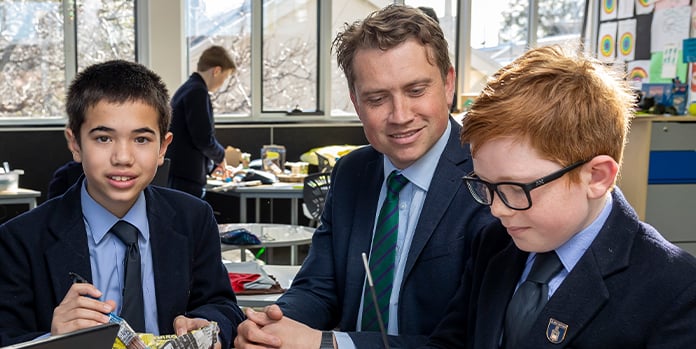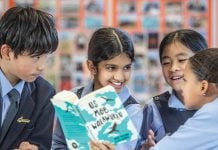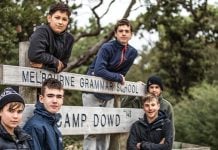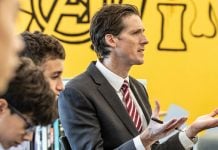What makes something truly sustainable? This term, our Year 5 students have been looking into the areas of food waste, e-waste and waste in the fashion industry, and turning their classroom learning into real-life business prototypes.
“We know we have a finite amount of resources and that if we continue to use them up, we won’t have much of a world left for the future,” says Tom Finney, who has been teaching the sustainable consumerism unit. “This inquiry is about educating students to think carefully about the impact they have on their environment every day.”
Defining needs versus wants
To understand what sustainable consumerism means, our Year 5s started by asking themselves: What are the things I actually need, and what are my wants?
“Students might start by saying they need their PlayStation or to be able to play Minecraft, but we keep going to find out what the essentials are for our everyday lives,” explains Mr Finney. “We also challenge them to start considering when they’re being influenced by marketing and social media, including ‘green-washing’, which is when companies market themselves as sustainable even though their practices may not be.”
“It’s about encouraging students to be a bit more savvy, and to question aspects of the world around them,” Mr Finney adds.
Changed thinking, changed behaviour
To bring these ideas about sustainability to life, the Year 5 classes participated in three incursions to connect with people who have built sustainability into their business practices. Students heard from HoMie, a not-for-profit that supports young people affected by homelessness, along with the sustainable dining restaurant Parcs, and Mobile Muster, which promotes and facilitates e-waste recycling.
“I learnt that fashion waste is actually the second biggest source of waste in Australia, and that Australia is the second largest consumer of fashion in the world, which was shocking given our small population,” says Year 5 student Josh. “In future I’m planning to donate my old clothes and to make sure my old computers get recycled.”
After hearing from these organisations, students got to work in the classroom and at home to build prototypes of their own sustainable products. Recycled clothing, sustainable kitchenware and recipes that made use of items already in the pantry were designed, tested, and refined as part of the learning process.
For Year 5 student Henry, the idea of reducing food waste was so intriguing he took his whole family on an excursion to Parcs to try their sustainable menu. “I saw how they made their plates and how they re-used food,” he says. “It tasted amazing.”
“I’m so proud of the way these students have understood the importance of being proactive about creating a more sustainable world,” says Mr Finney. “I hope this unit encourages them to think carefully about the waste they produce and to make better choices as consumers as they grow older.”



